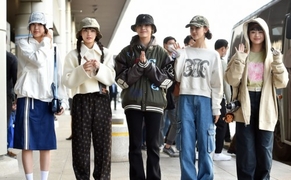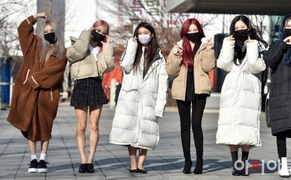 |
| South Korean Defense Minister Ahn Kyu-baek (left) and U.S. Secretary of War Pete Hegseth pose for a photo in front of the conference building at the Joint Security Area (JSA) in Panmunjom on November 3. / Source: Ministry of National Defense |
South Korean Defense Minister Ahn Kyu-baek and U.S. Secretary of War Pete Hegseth visited the Joint Security Area (JSA) in Panmunjom on November 3, reaffirming their commitment to a strong joint defense posture against North Korea’s nuclear threat.
Minister Ahn welcomed Hegseth at Camp Bonifas, a U.S. Forces Korea base on the southern side of the JSA in Paju, Gyeonggi Province. The two defense chiefs received an operational briefing from South Korean and U.S. battalion commanders of the JSA Security Battalion at Observation Post Ouellette, the northernmost guard post just 25 meters from the Military Demarcation Line (MDL). The post is also known for being visited in June 2019 by then-President Donald Trump and former President Moon Jae-in.
It marked the first joint visit to the JSA by South Korean and U.S. defense chiefs since October 2017, when then-Minister Song Young-moo and U.S. Secretary James Mattis visited the site. The JSA, a symbolic location on the Korean Peninsula’s frontline and the venue of the historic Trump–Kim Jong-un meeting, served as a backdrop for both sides to reaffirm their determination to jointly counter future nuclear and security challenges.
Hegseth’s decision to make the JSA visit his first official event in South Korea underscored Washington’s commitment to the alliance and sent a symbolic signal of deterrence to Pyongyang. However, he avoided direct remarks toward North Korea during the visit, reflecting his cautious approach toward potential U.S.–North Korea dialogue.
The U.S. defense chief, who took office in January, will attend the 57th U.S.–ROK Security Consultative Meeting (SCM) in Seoul on November 4 — his first official trip to South Korea. The SCM, to be held at the Ministry of National Defense in Yongsan, will cover a wide range of topics including coordination on North Korea policy, combined defense readiness, extended deterrence, regional security cooperation, cyber, space and missile collaboration, defense industry cooperation, and defense science and technology.
Discussions are also expected to include issues raised at the October 29 summit between Presidents Lee Jae-myung and Donald Trump — such as the construction of nuclear-powered submarines, the timeline for the transfer of wartime operational control (OPCON), modernization of the alliance, and greater flexibility in the deployment of U.S. forces in Korea.
Presidential Chief of Staff Kang Hoon-sik said in a briefing, “Since North Korea has declared it possesses nuclear-powered submarines, South Korea must have corresponding capabilities as well,” adding, “We believe even China was persuaded by that reasoning.”
Most Read
-
1
-
2
-
3
-
4
-
5
-
6
-
7





















